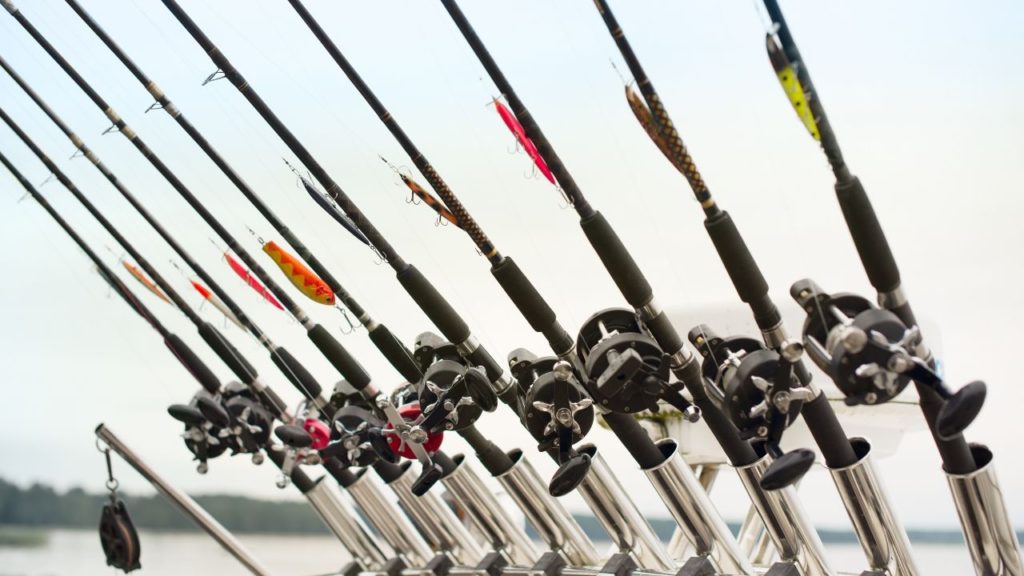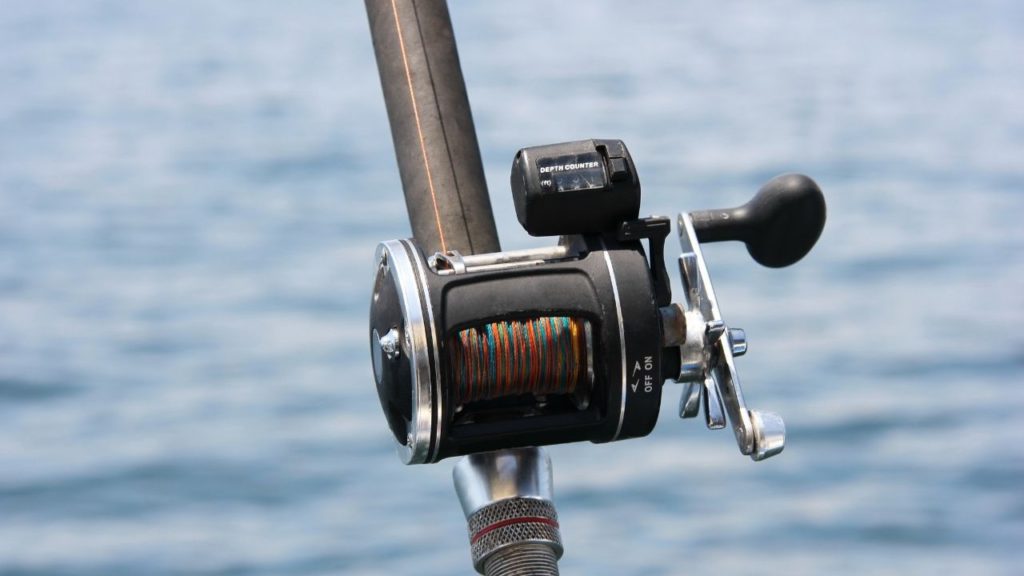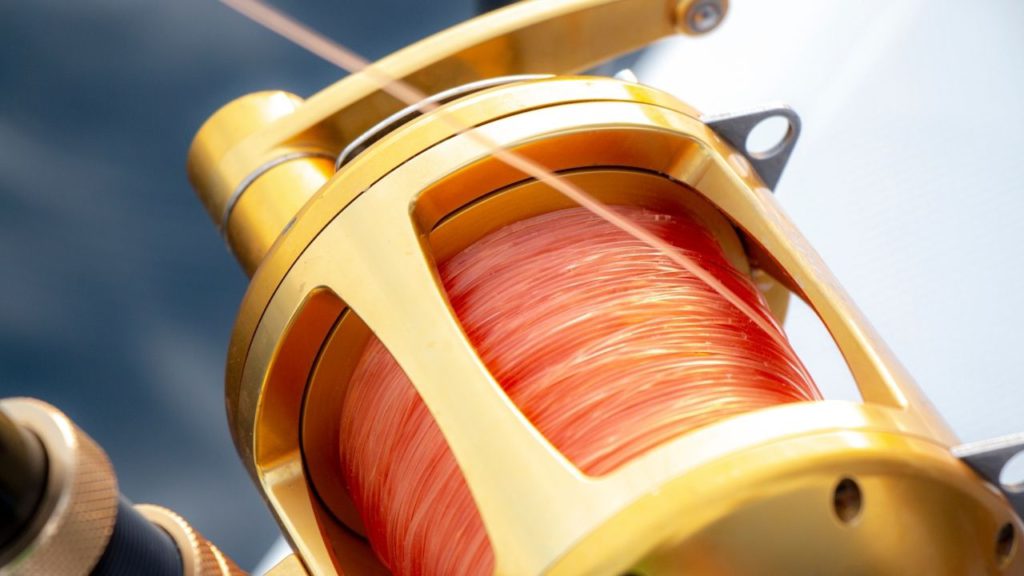If you’ve wondered what is trolling for fish, you’re in the right place. Trolling is one of the most effective ways to catch fish, whether fishing for trout, salmon, or bass. This article will give you an overview of how to troll for fish, including what equipment you need to be successful.
Trolling for Fish: What Is It?
Trolling is a fishing technique where bait or lures are drawn through the water behind a moving boat. The boat’s movement creates a wake, attracting fish. And, since a bait or lure is trailing behind the boat, it can also entice them to strike.
Trolling can be an effective way to catch fish because it allows you to cover a lot of water and fish at different depths. The most common fish to troll for are trout, salmon, and bass.
Is Trolling Legal?
Trolling for fish is legal. However, there are some regulations you need to be aware of. Some have restrictions on the number of lines you can troll, while other areas ban trolling altogether.
For example, in Wisconsin, trolling is legal on inland waters. However, there are restrictions on the number of hooks, baits, and lures per person, depending on the specific counties you want to fish in. Some areas also don’t allow certain trolling motors or watercraft.
So, before you head out trolling, check the regulations in your state or county. If trolling is allowed, ensure you follow the number of lines, hooks, baits, and lures you’re allowed to use.
What Gear Do You Need for Trolling Fishing?
Trolling requires a few but crucial pieces of gear to be successful. In addition to a boat, you’ll need a trolling rod, trolling motor, reel, fishing line, and lures or bait. A downrigger can also get your bait or lure down to the fish.
1. Trolling Rod

You can use different rods depending on where you are fishing and the type of fish you are catching. However, your rod needs to be stiff to tolerate water resistance and when fish pulls your lure.
What Is a Trolling Rod?
A trolling rod is different from a regular fishing rod. Its design allows it to handle the resistance of the trolling line and the weight of the fish. It is used by attaching the trolling line to the rod and then casting it out behind the boat. The trolling line is then slowly reeled in, allowing the bait or lure to travel through the water.
How Long Should a Trolling Rod Be?
Trolling rods can vary in length depending on the type of fish you are trolling for. For example, a trout rod may be shorter than a salmon rod. In general, most trolling rods are between six and eight feet long.
2. Reel

The reel is another critical piece of gear for trolling. You’ll need a reel that can hold a lot of line and has a good drag system. The drag system is crucial because it allows you to control the speed of the line being reeled in and prevents the fish from breaking your line.
What Is a Trolling Reel?
As its name suggests, a trolling reel is a specialized reel made for trolling. It is different from a casting reel in several ways.
- Larger spool to hold more lines.
- Includes a line counter or depth counter
- Stronger drag system to handle the resistance of the trolling line and the weight of the fish
- Have a multi-speed
3. Boat
Of course, you’ll need a boat to go trolling. You can use any type, but some are better suited for the task than others. For example, bass boats and pontoon boats are popular choices for trolling because they provide a stable platform and have plenty of space to store gear.
4. Trolling Motor
Another critical piece of equipment that you’ll need is a trolling motor that you can mount on the front or back of the boat. A trolling motor moves the boat slowly and faster through the water and allows you to fish in areas without wind or current.
What Is a Trolling Motor?
A trolling motor is a small engine used to power a boat while trolling. It is usually mounted on the back of the boat and provides thrust to move the boat forward. A trolling motor is different from an outboard motor in several ways:
- Smaller and more compact.
- Has a variable speed control so that you can troll at different speeds
- Designed to run for long periods without overloading the battery
How Do I Know the Size of Trolling Motor I Need?
The size of trolling motor you need depends on the size and weight of your boat. As a reference point, every 100lbs of boat weight should have at least 2lb of thrust power from the trolling motor.
5. Outriggers
Outriggers are long poles that extend out from the side of the boat. They hold the line away from the boat to prevent tangles. Outriggers also provide more stability to the boat and make it easier to fight fish.
6. Downriggers
Downriggers are devices used to lower the bait or lure down into the water. They use a weighted line to keep the bait at the desired depth. Downriggers are especially useful for fishing in deep water or targeting bottom-dwelling fish species.
7. Planer Boards
Planer boards hold the line out away from the boat. Plus, they allow you to fish multiple lines at once and can help you spread your bait or lure over a wider area. Planer boards are especially useful for fishing in areas with many weeds or other obstacles.
8. Trolling Line

The type of line you use for trolling is important. You’ll want to use a heavy-duty line that can handle the weight of the fish and the resistance of the water. Monofilament, braided, and fluorocarbon lines are all good choices for trolling.
Do You Use Mono or Braided Line for Trolling?
You can use a few different lines for trolling, but the two most popular choices are monofilament and braided lines. The monofilament line is cheaper and easier to find, but it is not as strong or durable as the braided line. On the other hand, Braided line is more expensive, but it is stronger and more resistant to abrasion.
How Much Line Should You Let Out When Trolling?
The amount of line you let out when trolling depends on the depth of the water and the type of fish you are targeting. But, in general, you’ll want to let out enough line so that the bait or lure is just above the bottom.
For example, if you are fishing in 20 feet of water, you will let out about 20 feet of line. Ultimately, it is up to you to experiment and find the right depth for their particular situation.
9. Lure

The lure is the bait used to attract fish. It is attached to the end of the line and is usually made of plastic, metal, or wood. There are many different types of lures targeting specific fish species.
What Bait Do You Use for Trolling?
The type of bait you use for trolling depends on the fish you want to catch. Some common choices include minnows, worms, and artificial lures. Minnows and worms are live baits that you can buy at most bait shops. On the other hand, artificial lures look and smell like real bait, but they are plastic or metal.
Trolling for Fish FAQ
What Kind of Fish Can You Catch Trolling?
You can catch various fish by trolling, both saltwater and freshwater fish. Some saltwater fish that you can catch are marlin, sailfish, tuna, and mackerel. For freshwater fish, you can reel in trout, bass, pike, and walleye.
In general, you can catch most types of fish by trolling. However, some fish are more difficult to catch than others. It is important to do your research and find out what kind of fish you are targeting before you head out trolling.
What Is a Good Trolling Speed?
In general, a good trolling speed is between two and four miles per hour. However, the exact speed will depend on the type of fish you are targeting. It is important to do your research and determine what trolling speed is best for the fish you are trying to catch.
Expert Tip: Don’t disregard the importance of a good trolling speed. If you troll too slowly, it’s not going to be enticing for the fish. Troll too quickly, and the fish might not be able to catch your lure.
Conclusion
So, what is trolling for fish? It is a method of fishing where you drag bait or lure behind a boat. When trolling, it is important to use the right type of line, bait, and lure for the fish you are targeting. With a bit of practice, you will be an expert at trolling in no time!
Table of Contents



